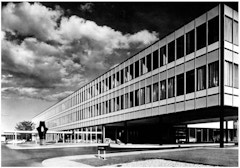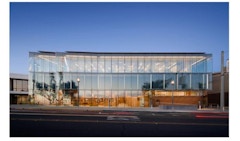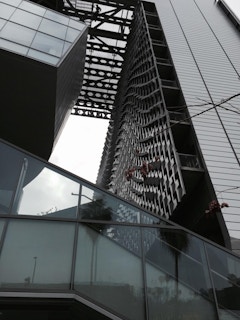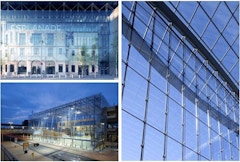Facing Density
The United Nations Department of Economic and Social Affairs projects a world population growth of over three billion over our current, nearly eight
The United Nations Department of Economic and Social Affairs projects a world population growth of over three billion over our current, nearly eight

Factory inspection visits are vital, yet they unfortunately have a habit of being overlooked. The factory inspection process during the Building

Computer simulations of an automated dynamic facade in a passively heated and cooled building by using predictive modeling of short-term future

Mid-century through 1980’s buildings with lock-strip or “zipper-gasket” glazing systems are an ever present part of the urban landscape in many
The development of methods to predict and control moisture accumulation in building envelopes has always been a key element in building science.

3.5 billion years ago, cyanobacteria created the foundation for life on Earth by producing the oxygen basis for our atmosphere. Should we once again

The Science and Engineering Complex (SEC) on the Allston Campus is the largest new building at Harvard University in recent decades with a footprint
Today’s building enclosures face ever greater demands regarding their thermal performance. In cold climates, the required total U-value of the façade

The recently completed Capital One Hall performing arts center located in the Washington DC metro area is defined by a pleated exterior of glass and
Responsive shading systems can dynamically improve indoor environmental conditions based on outdoor climate variations. Among the technologies,

This paper tells the story of a Double Skin Facade (DSF), where high performance and multi-disciplinary collaboration saves a library concept of

There is no doubting the longevity of stainless steel building facades. The Chrysler Building and numerous buildings that followed have stood the
Facades are increasingly being recognized as a major contributor to whole-building embodied carbon. While designers know how to reduce the embodied

The performative and visual aspects of curved forming/bending thin “formable” planar materials is explored. Early tests for deflection indicate that

This abstract proposes that architectural facade design over the last 60 years has convulsed in light of two disruptions: air spaces which create
At the core of facade design is the concept of interdisciplinarity, a bridge between concept and materialization apt to relay a built form

Resiliency is the capacity of a building (or building component in the case of the facade) to support building functionalities during extreme events

Facade engineering aims at appropriately balancing the demands imposed by the context and the capabilities inherent to the materials, the geometries